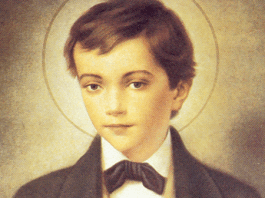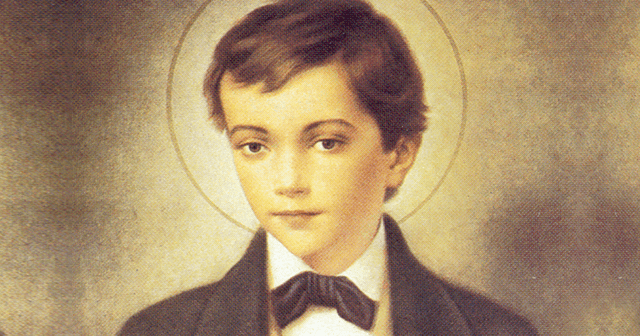
Dominic Savio, a choirboys’ patron saint, emerged from humble origins in Riva, Italy. At twelve, he joined St. John Bosco’s Oratory in Turin as a student. His aspiration for priesthood and dedication to aiding Bosco with marginalized youth marked him out. Dominic was a natural mediator and leader, establishing the Company of the Immaculate Conception. This group was not only devotional but also supported Bosco’s work with the youth and in manual tasks. By 1859, all members except Dominic had joined the initial ranks of Bosco’s Salesian order. Dominic, however, had already passed on.
Dominic was known for his profound prayer life, often experiencing raptures he humorously termed “my distractions.” His spirituality was so intense that he feared his expressions of faith might be misunderstood as frivolity by his peers. He held a belief in performing all actions, no matter how minor, for God’s greater glory.
Fragile health plagued Dominic, leading to severe lung issues. Attempting to recuperate at home, he underwent bleeding, a common treatment then, which only exacerbated his condition. He died on March 9, 1857, after receiving the Last Rites, with St. John Bosco chronicling his life.
There were those who questioned Dominic’s sainthood due to his youth. Contrary to this, St. Pius X affirmed that his young age was not a barrier but a testament to his sanctity, leading to his canonization in 1954.
Photo credit: Public Domain via Wikimedia Commons
The post Saint Dominic Savio appeared first on uCatholic.
Daily Reading
The Seventh Day in the Octave of Christmas
Reading I 1 John 2:18-21 Children, it is the last hour; and just as you heard that the antichrist was coming, so now many antichrists have appeared. Thus we know…
Daily Meditation
There Is More to Christmas
Click here for daily readings Jesus the Christ, the Light of the world, the true Light of the world that pushes back the powers of darkness, lives and reigns! Christmas…




